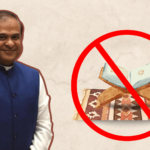In a significant development for the Indian economy, 18 countries have agreed to trade in Indian rupees, signaling a shift away from traditional modes of currency exchange.
The move is part of a broader effort by these countries to diversify their foreign exchange reserves and expand their trade relationships with India. The countries involved in this agreement include Russia, Sri Lanka, Fiji, Singapore, Botswana, Israel, Myanmar, Mauritius, Germany, Oman, Seychelles, Kenya, Malaysia, Uganda, United Kingdom, New Zealand, and Tanzania.
One of the key aspects of this agreement is the creation of special rupee vostro accounts (SRVA). These accounts will be established by banks in the 18 countries mentioned above and will allow them to hold Indian rupees on behalf of their clients. Essentially, this means that businesses and individuals in these countries will be able to trade directly in Indian rupees, without the need to first convert their currency into US dollars or another major currency.
The creation of SRVAs is expected to streamline trade between India and these countries by reducing the cost and complexity of currency exchanges. Additionally, it will give these countries greater control over their foreign exchange reserves, as they will be able to hold and trade in Indian rupees directly. This could also reduce their dependence on the US dollar, which has traditionally been the dominant currency for international trade.
The establishment of SRVAs is expected to provide several benefits for Indian businesses as well.
For one, it will make it easier and more cost-effective for them to conduct business with companies in these 18 countries. Additionally, it will make it easier for Indian businesses to expand their operations in these countries, as they will be able to transact in Indian rupees without incurring significant currency exchange costs.

The move towards trading in Indian rupees is part of a broader trend towards currency diversification in the global economy. As countries seek to reduce their dependence on the US dollar, they are increasingly exploring alternative currencies for trade and investment. For India, this trend represents a significant opportunity to expand its global trade relationships and position itself as a leading player in the global economy.
India has already taken several steps to make the rupee more attractive for international trade. In recent years, the Reserve Bank of India has introduced several measures to liberalize the foreign exchange market and make it easier for foreign investors to trade in Indian markets. Additionally, the Indian government has taken steps to reduce red tape and improve the ease of doing business in the country. These efforts have already started to bear fruit, with India emerging as one of the fastest-growing economies in the world in recent years.
The establishment of SRVAs is expected to further boost India’s economic growth by increasing trade and investment flows between India and the 18 countries involved in this agreement. This could help to create new jobs and opportunities for businesses in India, as well as strengthen its position as a leading player in the global economy.
In conclusion, the decision by 18 countries to trade in Indian rupees and establish SRVAs represents a significant shift in the global economy. The move towards currency diversification is expected to reduce dependence on the US dollar and make it easier and more cost-effective for countries to trade with each other. For India, this trend represents a significant opportunity to expand its global trade relationships and position itself as a leading player in the global economy. The establishment of SRVAs is expected to provide several benefits for Indian businesses, as well as reduce the cost and complexity of currency exchanges for businesses and individuals in the 18 countries involved in this agreement. Overall, this development is a positive sign for the future of the global economy and could pave the way for greater economic cooperation and growth in the years to come.









